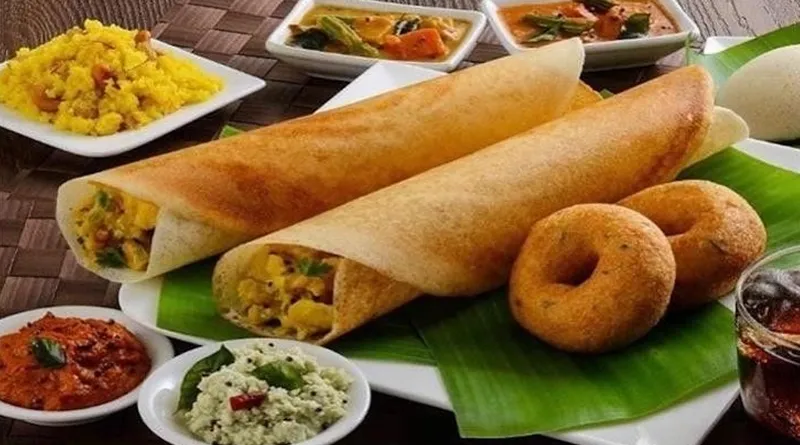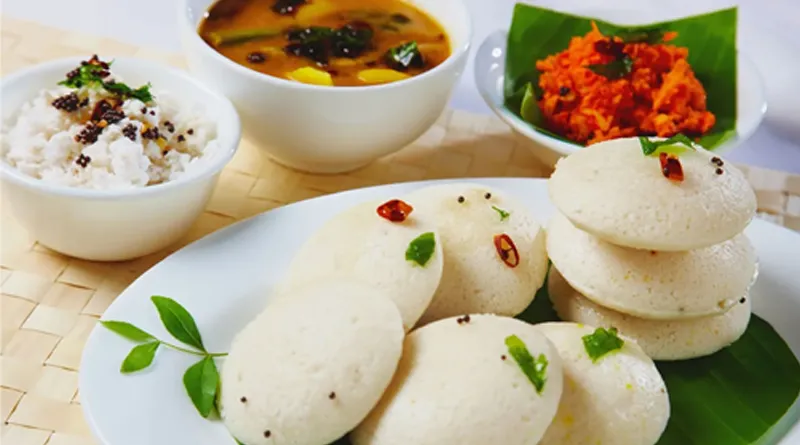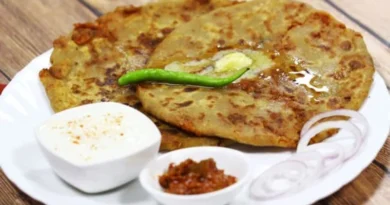Spices and Stories: Unveiling the Essence of Authentic South Indian Food
The deliciousness is exemplified through the exquisite flavors and aromatic combinations that define South Indian food. The unique blend of spices, the harmonious balance of tanginess and richness, and the artful pairing of ingredients create a culinary experience that is both comforting and exhilarating. From the crisp perfection of dosas to the soft, fluffy texture of idlis, South Indian cuisine offers a journey of taste that’s deeply satisfying. So, if you’re searching for a delectable culinary adventure you may write “South Indian food near me” on Google & beckons an exploration of vibrant tastes and delightful sensations that are sure to pull you near the South Indian cuisines nearby you, whether it is a small restaurant or a big one.
South Indian cuisine is known for its rich flavors, diverse ingredients, and unique preparation techniques. It has gained popularity not only in India but also abroad. Some of the famous
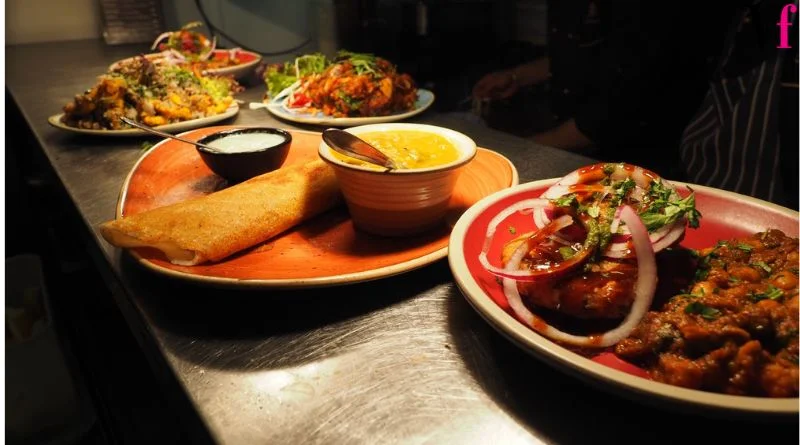
Contents
- 1 South Indian foods enjoyed both in India and around the world include:
- 2 The recipes for a popular South Indian dish: Sambar Recipe:
- 3 Instructions:
- 4 Appam is a unique and delicious South Indian dish that is made from a fermented rice and coconut batter. It’s known for its soft and fluffy center and crispy edges. Here’s a recipe for making appam:
- 5 Rasam Recipe: For the Rasam Powder:
South Indian foods enjoyed both in India and around the world include:
1. Dosa or Masala Dosa: is the soul of South Indian food and is available throughout the India. A slender and crunchy pancake crafted from a batter of fermented rice and lentils. It is typically served with coconut chutney and sambar (a vegetable and lentil stew).
The recipes for popular South Indian dish: Dosa Recipe
Ingredients:
1 cup rice (preferably parboiled rice)
1/4 cup urad dal (skinned black gram)
1/4 teaspoon fenugreek seeds
Salt to taste
Water (for soaking and grinding)
Oil or ghee (for cooking)
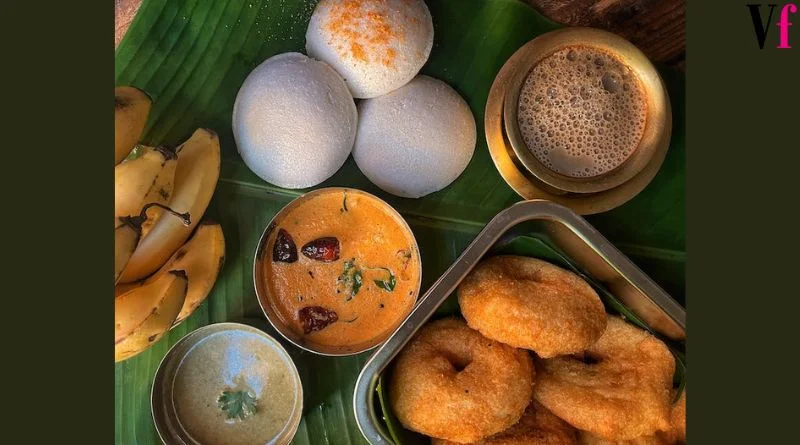
Instructions:
Wash the rice, urad dal, and fenugreek seeds separately and soak them in water for about 4-6 hours or overnight.
Drain the soaked ingredients and grind them together to make a smooth batter. Add water as needed, but avoid making the batter too thin.
Add salt to the batter and mix well. Allow the batter to ferment for at least 6-8 hours or until it doubles in volume.
Warm a non-stick or cast iron skillet (known as a tawa) over medium heat and apply a light coat of oil or ghee.
Pour a ladle of the dosa batter onto the tawa’s center.
With the back of the ladle, evenly spread the batter in circular motions to create a thin layer.
Add a touch of oil or ghee around the dosa’s edges.
Cook until the dosa turns golden brown and crispy on the bottom.
Turn over the dosa and cook the opposite side for about a minute.
Fold the dosa and remove it from the tawa.
Serve hot with coconut chutney and sambar.
2. Sambar: A lentil-based stew made with a variety of vegetables and flavored with a mix of spices. It is commonly served with rice or as an accompaniment to idli and dosa.
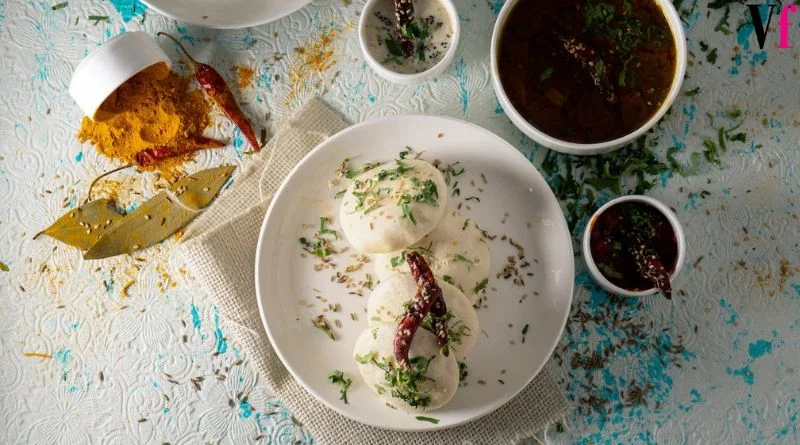
The recipes for a popular South Indian dish: Sambar Recipe:
Ingredients:
1 cup toor dal (pigeon peas)
1 small onion, chopped
1 small tomato, chopped
1/2 cup mixed vegetables (carrots, beans, eggplant, etc.), chopped
Tamarind pulp (about the size of a small lemon)
2 tablespoons sambar powder
1/4 teaspoon turmeric powder
Salt to taste
1 tablespoon oil
1/2 teaspoon mustard seeds
1/2 teaspoon cumin seeds
A pinch of asafoetida (hing)
A few curry leaves
2-3 dried red chilies
Two tablespoons of finely chopped cilantro (also known as coriander leaves) for adding as a garnish.
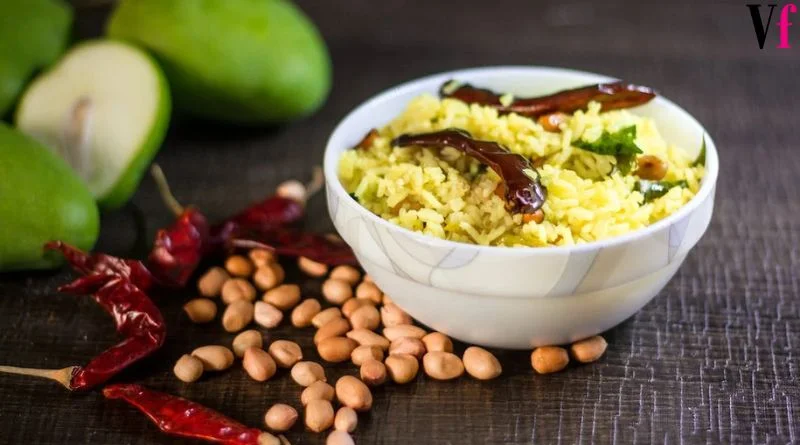
Instructions:
Cook the toor dal with enough water until it’s soft and mushy. Mash it well and set it aside.
In a large pot, heat oil and add mustard seeds. When they start to splutter, add cumin seeds, dried red chilies, asafoetida, and curry leaves.
Include diced onions and cook them until they become translucent.
Add mixed vegetables and sauté for a few minutes.
Introduce chopped tomatoes, sambar powder, turmeric powder, and salt into the mixture.
Cook until the tomatoes are soft.
Add tamarind pulp and enough water to achieve the desired consistency.
Bring the mixture to a boil and then let it simmer for about 10-15 minutes until the vegetables are cooked.
Add the cooked and mashed toor dal to the pot and mix well.
Let the sambar simmer for another 10 minutes to allow the flavors to meld.
Garnish with chopped cilantro.
Serve hot with dosa, rice, or idli sambar, sambar vada, or any other South Indian dish.
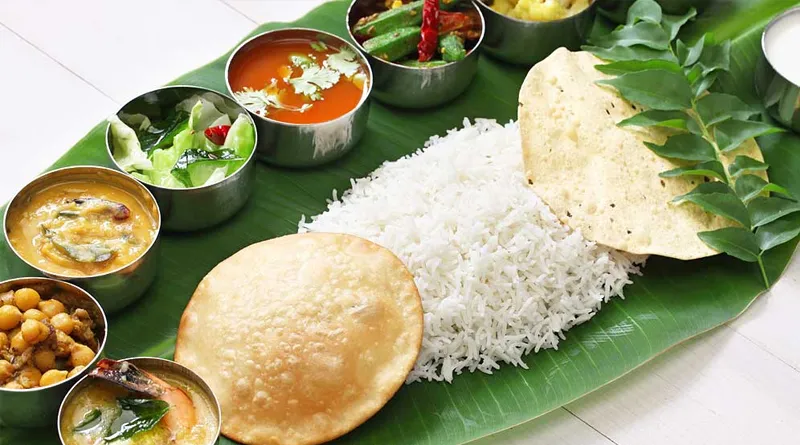
3. Idli: Steamed rice cakes made from a similar batter as dosa. They are soft and fluffy and are usually served with coconut chutney and sambar.
Recipe for making traditional South Indian Idli: Idli Recipe
Ingredients:
2 cups idli rice (parboiled rice)
1/2 cup urad dal (skinned black gram)
1/2 teaspoon fenugreek seeds
Salt to taste
Water (for soaking and grinding)
Instructions:
Wash the idli rice, urad dal, and fenugreek seeds separately and soak them in water for about 4-6 hours or overnight.
Drain the soaked ingredients and grind the urad dal and fenugreek seeds together to make a smooth and fluffy batter. Use water sparingly while grinding, as you want the batter to be thick.
Subsequently, grind the idli rice until it achieves a slightly textured consistency.
Mix it with the urad dal batter. Add salt and mix well.
Allow the batter to ferment for at least 6-8 hours or until it rises and doubles in volume.
The duration of fermentation may differ based on the temperature conditions.
Apply a small amount of oil or ghee to grease the idli molds. You can also use banana leaves or wet cloth in the molds to prevent sticking.
Pour the batter into the idli molds, filling them about three-fourths full.
Steam the idlis in a steamer for about 10-15 minutes or until a toothpick inserted into the center of an idli comes out clean.
After the idlis are fully cooked, take them out of the molds using a spoon or a knife.
Allow the idlis to cool down a bit before taking them out of the molds entirely.
Serve the idlis warm with coconut chutney, sambar, or any other desired accompaniments.
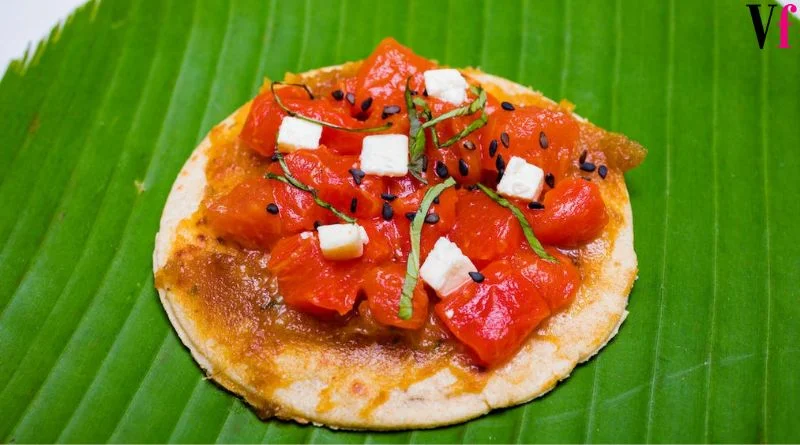
Note: Idli batter should be thick, but not too dense. The process of fermentation plays a vital role in achieving idlis that are tender and airy.If the weather is cold, it might take longer for the batter to ferment. You can place the batter in a warm place or use the oven’s light to aid in fermentation.
Idlis are a versatile dish and can be enjoyed as a breakfast item or even as a light meal or snack. They are known for their soft and spongy texture and are often served with coconut chutney and sambar for a delicious South Indian meal.
4. Appam: Soft, fluffy pancakes with crispy edges, made from fermented rice and coconut batter. They are a popular breakfast dish, often paired with vegetable stew or sweet coconut milk.
Appam is a unique and delicious South Indian dish that is made from a fermented rice and coconut batter. It’s known for its soft and fluffy center and crispy edges. Here’s a recipe for making appam:
Appam Recipe:
Ingredients:
2 cups raw rice
1/2 cup grated coconut
1/4 cup cooked rice
1/2 teaspoon active dry yeast
1 teaspoon sugar
Salt to taste
Water (for grinding and fermentation)
Oil or ghee (for cooking)
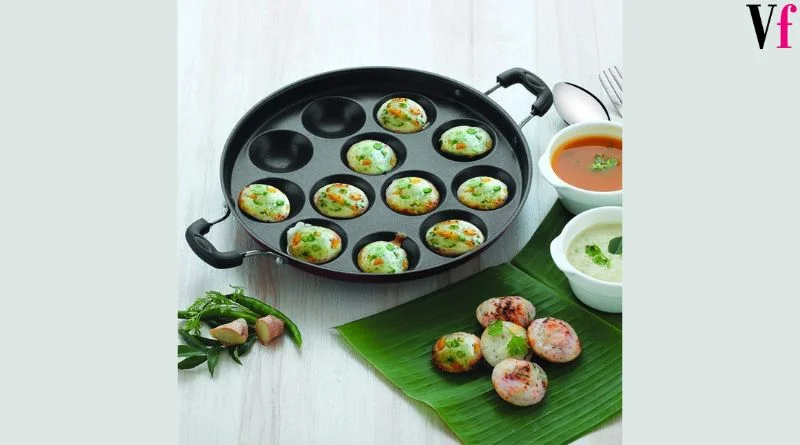
Instructions:
Wash the raw rice and soak it in water for about 4-6 hours or overnight.
In a separate bowl, dissolve the yeast and sugar in a little warm water. Allow it to rest for approximately 10 to 15 minutes until it develops froth
Grind the soaked rice, grated coconut, cooked rice, and the yeast mixture together to make a smooth batter. Add water as needed to achieve a slightly thick but pourable consistency.
Incorporate salt into the batter and blend thoroughly.
Cover the batter and let it ferment for around 6-8 hours or overnight. The batter ought to expand and acquire a mild airy texture.
Heat an appam pan or non-stick skillet over medium heat. If you’re using a traditional appam pan, it has a rounded bottom that helps in creating the unique shape of the appam.
Once the pan is hot, lightly grease it with oil or ghee.
Pour a ladleful of the batter onto the center of the pan.
Hold the sides of the pan and swirl it quickly in a circular motion to spread the batter, allowing it to coat the edges and create a thin center.
Cover the pan with a lid and cook for a few minutes until the appam’s edges become crisp and lacy, and the center is soft and cooked.
Gently remove the appam from the pan using a spatula or by tilting the pan and letting it slide onto a plate.
Duplicate the procedure using the remaining batter, ensuring to apply a light coating of oil or ghee on the pan before creating each appam.
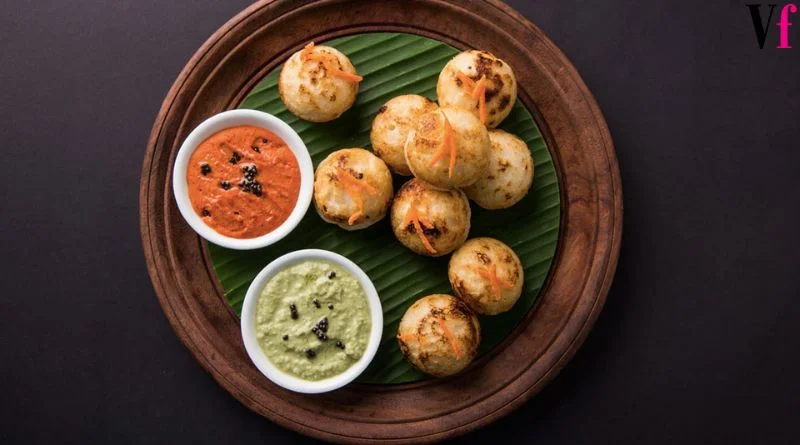
Serve the appams hot with coconut milk, vegetable stew, or any other side dish of your choice. The combination of the soft and spongy center with the crispy edges makes appam a delightful and popular South Indian breakfast or snack option.
5. Rasam: A tangy and spicy soup-like dish made with tamarind, tomatoes, and various spices. It is often served as a part of a meal or consumed as a light appetizer.
Rasam is a flavorful and tangy South Indian food-soup made with tamarind, tomatoes, and a blend of spices. It’s often enjoyed as a comforting appetizer or as a part of a larger meal. Here’s a basic recipe for making rasam poweder 1st thereafter we will learn how to prepare Rasam soup.
Rasam Recipe: For the Rasam Powder:
Ingredients:
2 teaspoons coriander seeds
1 teaspoon cumin seeds
1/2 teaspoon black pepper
1-2 dried red chilies
1/2 teaspoon fenugreek seeds
1/2 teaspoon mustard seeds
1/2 teaspoon turmeric powder
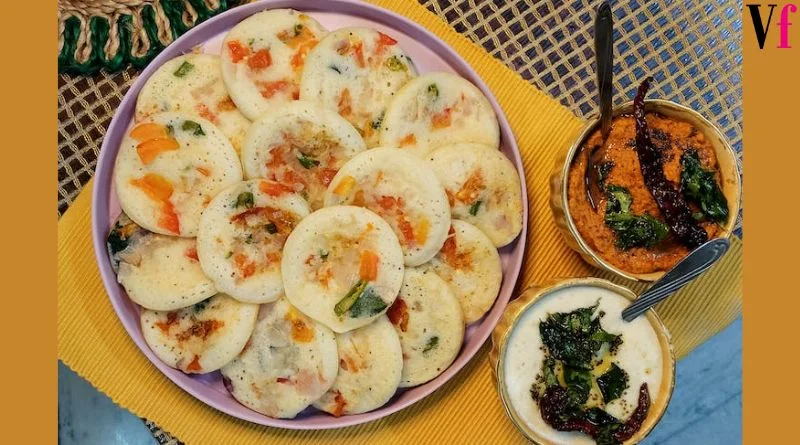
For the Rasam Base:
1 A tamarind ball about the size of a small lemon, soaked in water.
2 ripe tomatoes, chopped
1/2 cup cooked toor dal (pigeon peas)
2-3 cups water
Salt to taste
A pinch of asafoetida (hing)
1 tablespoon oil or ghee
1/2 teaspoon mustard seeds
A few curry leaves
2-3 dried red chilies
Two tablespoons of finely chopped cilantro (also referred to as coriander leaves) for the purpose of garnishing.
Instructions:
Preparing Rasam Powder:
Dry roast coriander seeds, cumin seeds, black pepper, dried red chilies, fenugreek seeds, and mustard seeds until fragrant. Allow them to cool.
Grind the roasted spices along with turmeric powder into a fine powder. This is your rasam powder. Set it aside.
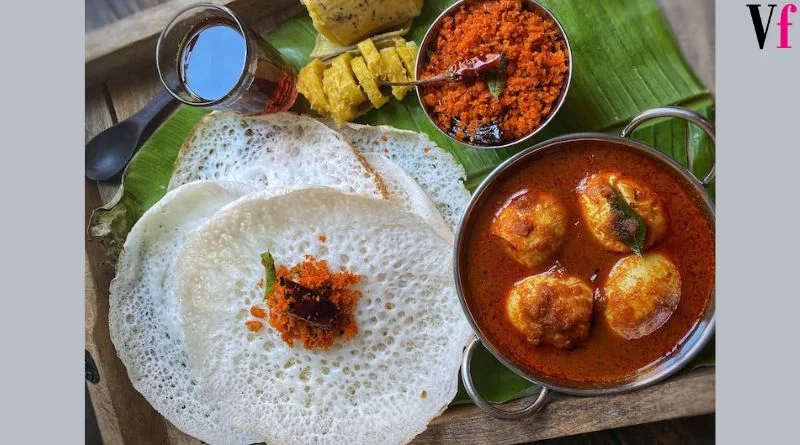
Preparing Rasam:
Extract the tamarind pulp by squeezing the soaked tamarind in water. Remove the solid parts and retain the tamarind-infused water.
In a pot, combine the tamarind water, chopped tomatoes, and water. Bring to a boil and let the tomatoes soften.
Add the cooked toor dal and mix well to combine. Let the mixture gently simmer for a few minutes.
Add about 2 teaspoons of the prepared rasam powder (adjust to taste) and salt. Stir to combine.
In a separate small pan, heat oil or ghee for tempering. Add mustard seeds, and when they start to splutter, add asafoetida, dried red chilies, and curry leaves.
Add the tempered spices to the rasam pot and blend thoroughly.
Let the rasam simmer for a few more minutes, ensuring that it’s heated through and the flavors meld.
Garnish with chopped cilantro.
Serve the rasam hot as a soup or as a side dish with rice. Rasam’s tangy and spicy flavors, along with its aromatic spices, make it a comforting and refreshing addition to South Indian meals.
6. Vada: Deep-fried lentil fritters, often served with coconut chutney and sambar.
7. Uttapam: A thicker pancake made from the same batter as dosa, but with added vegetables like onions, tomatoes, and peppers.
8. Pongal: A savory dish made from rice and lentils, cooked together and flavored with ghee, black pepper, and cumin seeds.
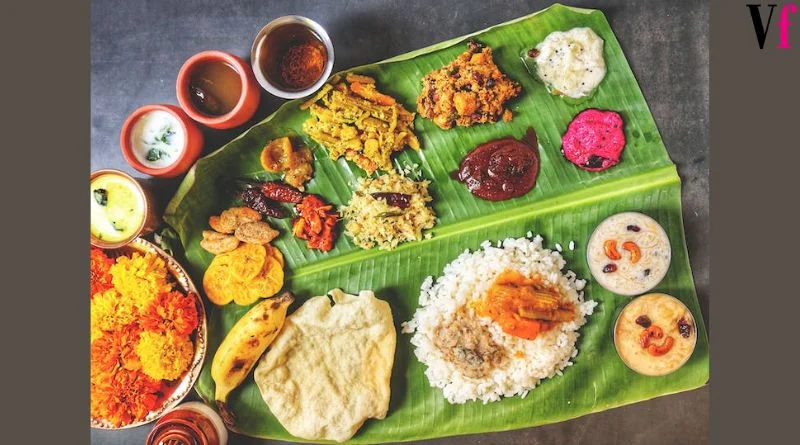
9. Biryani: Although biryani is popular all over India, the South Indian version often features more spices and flavors. It’s a fragrant rice dish cooked with spices, meat (like chicken or mutton), and sometimes vegetables.
10. Coconut Chutney: A versatile condiment made from grated coconut, green chilies, and other spices. It is often served with various South Indian dishes to provide a refreshing contrast.
11. Kerala Sadya: A traditional feast from Kerala, featuring a wide array of vegetarian dishes served on a banana leaf. It includes items like avial (mixed vegetable curry), olan (ash gourd and coconut milk stew), and more.
12. Chettinad Cuisine: Hailing from the Chettinad region of Tamil Nadu, this cuisine is known for its spicy and flavorful dishes, often prepared with freshly ground spices. Chettinad chicken curry and Chettinad pepper chicken are notable examples.
13. Andhra Cuisine: Known for its fiery spiciness, Andhra cuisine offers dishes like Andhra-style biryani, gongura pachadi (sorrel leaves chutney), and various pickles.
South Indian cuisine has gained international recognition, with many South Indian restaurants and food stalls present in different countries. Dosa, idli, and other South Indian delicacies are enjoyed by people around the world due to their unique flavors and vegetarian options. In conclusion, South Indian cuisine stands as a testament to the rich culinary heritage of the region. With its diverse array of flavors, textures, and ingredients, it offers a symphony of taste that resonates not only within the borders of India but also across the globe. From the spongy idlis and crispy dosas to the aromatic sambar and flavorful rasam, each dish tells a story of tradition, innovation, and the joy of sharing a meal. These recipes provide a basic guide to making dosa, sambar, idli sambar, sambar vada, and many more south Indian food for foodies, but keep in mind that variations exist based on personal preferences and regional differences. The uniqueness of South Indian food lies in its ability to capture the essence of cultural authenticity while embracing modern twists. Whether you’re a native longing for familiar tastes or an adventurous food enthusiast eager to embark on a flavorful journey, South Indian cuisine promises to satisfy both the palate and the soul. So, as you indulge in the tantalizing flavors of this cuisine, remember that every bite carries a piece of history, a touch of artistry, and a whole lot of love for food.
